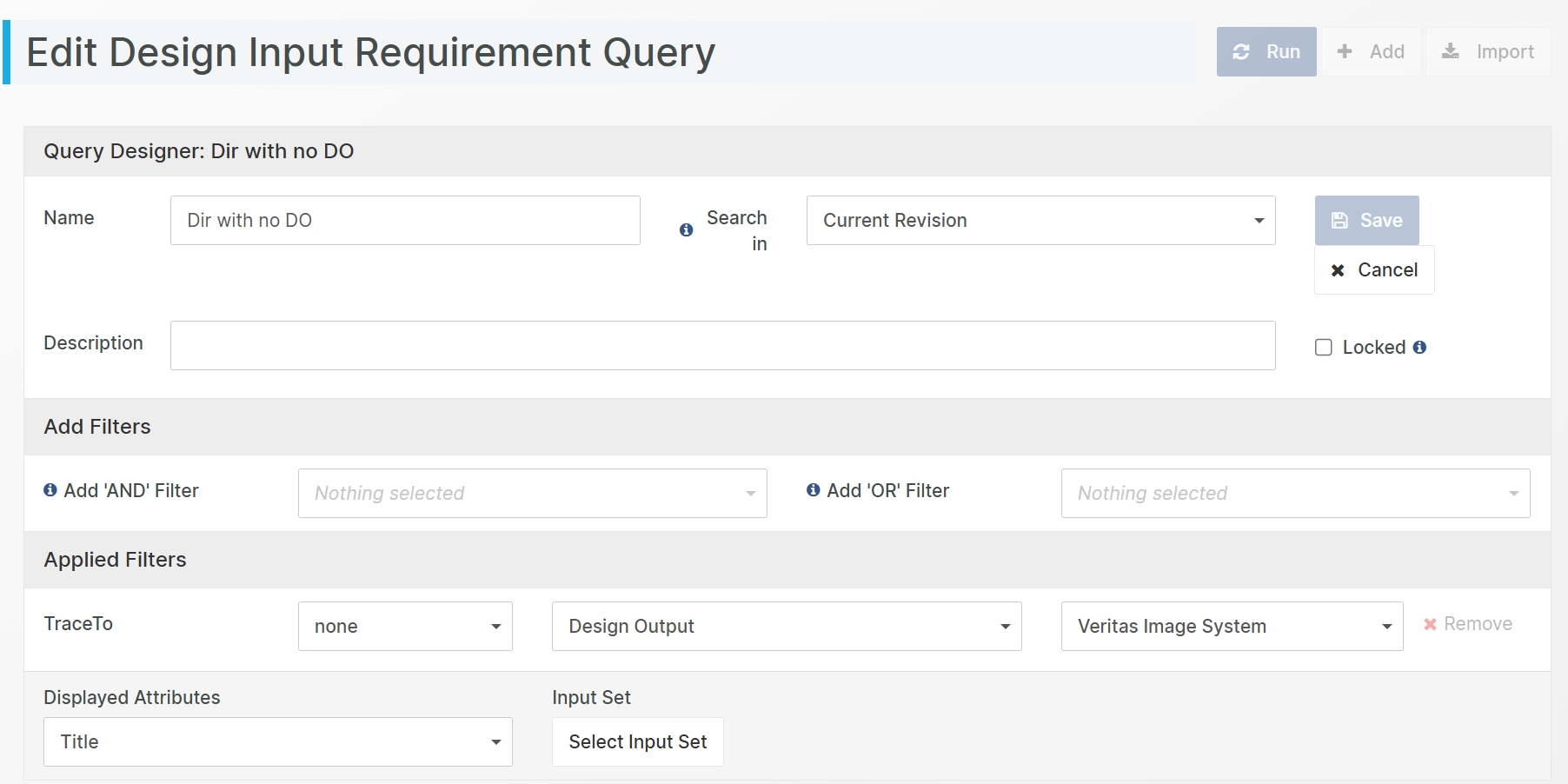Design a Query
How to Design a Query
Use the Add button to create a new Query or the Edit button to edit the selected Query.

This will display the Query Designer.

Query Name
The name of the Query. Select a name that summarizes what the Query does.
"Search In"-mode
The Search In dropdown defines how far in the Document Object history the query shall search and what to include in the output.
The following search modes are available:
Current Revision (exclude disabled)
This is the default search mode. The search is only considering the most current revision of the Document Objects in the input set, but excludes currently disabled Document Objects.
All Revisions (exclude disabled)
The search mode considers all revisions of the Document Objects in the input set, but excludes currently disabled Document Objects. The output set can thus include several revisions of the same object.
All Revisions, Get Last (exclude disabled)
The search mode considers all revisions of the Document Objects in the input set, but excludes currently disabled Document Objects. The output set yields only the (chronologically) latest match of all revisions of the same object. The output set thus only contains one revision for each Document Object.
Current Revision, include disabled
This search mode only considers the most current revision of the Document Objects in the input set, and includes currently disabled Document Objects.
Current Revision, only disabled
This search mode only considers the most current revision of the Document Objects that are disabled.
All Revisions include disabled
The search mode considers all revisions of the Document Objects in the input set, including currently disabled Document Objects. The output set can thus include several revisions of the same object.
All Revisions only disabled
The search mode yields all disabled revisions of the Document Objects in the input set. The output set can thus include several revisions of the same object.
Description
Describe the intended purpose and planned usage for the query to efficiently communicate to other users why this query exists.
Lock a Query
Users with Project Management user rights have the possibility to Lock (and unlock) a query by checking the Locked checkbox. A locked query design cannot be edited or disabled by other users.
Add Filters
Use the Add 'AND' Filter or Add 'OR' Filter dropdown to add new filters. Use the Minus button next to the filter to remove a filter.
See the Filters section for details about the available filters.
Displayed Attributes
Use the Displayed Attributes dropdown to select the attributes to be displayed in the Output grid. A separate column is created for each attribute.
Input Set
Select if you want to use a Static or Dynamic Input Set.
The difference can be explained as follows:
A Static Input Set consists of a defined number of document objects. If a Document Object becomes disabled, it is automatically removed from the input set. If a Document Object in the input set is modified, the input set is updated to include the new revision of the object. However, if a Document Object created/added, it is NOT automatically added to the input set. The user has to explicitly add it to the input set using drag-and-drop.
A Dynamic Input Set consists of a defined number of chapters (and optionally their subchapters) and implicitly of all Document Objects in those chapters. The set is updated for disabled and modified Document Objects, just as for Static Input Sets. The big difference is that a Dynamic Input Set automatically includes Document Objects that have been created/added or moved to its chapter set.
How to copy a Query
Click on the Copy button. This will create a copy of the selected query and allow you to modify it and save it under a new name.
How to delete a Query
Click on the Delete button to delete the Query.
Using Queries to find disabled Document Objects
Create a new Query. Leave the Input set to default. Set the Search in parameter to Current revision, only disabled. Save the query and run it. You can now export these items to Word or excel, or use Update Multiple Items to enable the Document Objects.
